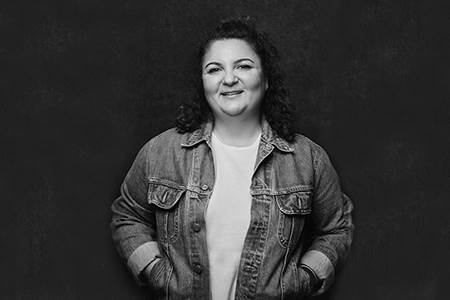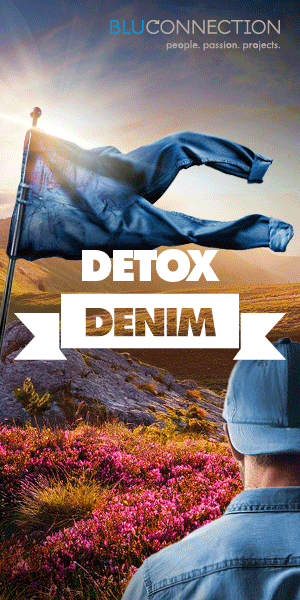A regenerative mindset

Sebla Onder, head of sustainability for Orta, walks us through the many steps the company is taking on its journey to making the most sustainable jeans.
Q What new developments is Orta working on that you feel are the most promising?
A Today at ORTA, we are focusing regenerative systems as we believe that they are key to solving some of the problems we face with regards to material scarcity while also improving environmental and social conditions. For us, regenerative systems have three focus areas: longevity, circularity and regeneration.
One of the developments we are currently working on is the Torque family. Our patent-pending magical stretch technology Torque fabrics contain zero elastane and petroleum-based fibres. Torque pushes the limits with new alternatives that reduce reliance on synthetic fibres and addresses micro plastics. The 100% natural cellulosic fabrics in the Torque family are mechanically recyclable and potentially biodegradable without generating microplastic pollution.
Another product family I would like to mention is GenH, made from hemp fibre. We have been using hemp fibre in our fabrics for more than two years now and we really love it. We source this amazing fibre from a cooperative in France. The hemp plant itself is a climate resistant, rainfed plant that does not require fertilizers or pesticides during growing. The farmers use this plant as a rotation crop as well as a cover crop to enrich their soil and biodiversity around their fields. The complicated side of the hemp is fibre production. Conventional methods required that the harvested plants be submerged in water baths and treated with chemicals to soften the fibre. But our supplier is doing everything as natural as it can be. The harvested plants are left on the field and the rain and humidity in air decompose the gummy structure. The stalks are processed using a mechanical system and converted into fibre. No chemicals or water are involved and any additional processes are powered by renewable electricity. We think that this hemp fibre really complements our fabrics’ authentic look too.
Another important development is regenerative cotton. Regenerative cotton is a location specific approach to cotton growing practices. It is about knowing your soil, your environment and planning your system accordingly. It involves minimum disturbance of soil, using cover cropping to enrich the soil, avoiding the use of excessive water, creating an eco-balance with livestock and land, enriching biodiversity… The great part about it is that these practices also help sequester carbon from air. It can thus also combat climate change. That is why we see it as the future of cotton.
What is Orta’s policy with regards to cotton sourcing?
We have been using organic cotton since early the 2000s. We first began by blending 5% organic cotton into our regular cotton blend without reflecting the added cost to our customers. Our main motivation was to create a demand for organic cotton while supporting farmers. We applied the same principle to better cotton and blended it into our regular cotton. We support sustainable cotton schemes as well as certifications on both local and global level.
Cotton is under great stress from both global economy uncertainties and climate change impacts. The increasing consumer consciousness on environment also puts more pressure on cotton. While Better Cotton and organic programs are growing exponentially, demand for sustainable products exceeds today’s supply. Here, the role of in conversion systems are also important as they meet some of the organic cotton demand, while creating additional income for growers during their transition time, which might inspire farmers to embrace organic systems.
ORTA has committed to 100% regenerative cotton and we are in the process of obtaining a regenerative cotton certification from Regenagri, an international regenerative agriculture program for securing the health of the land and the wealth of those who live on it. It supports farms transitioning to holistic farming, increasing soil health, encouraging biodiversity, reducing green-house gas emissions and sequestering CO2. Regenagri Content Standard (RegenagriCS) certification verifies that the regenerative cotton we use is a net-positive—a bluesky fabric certification that can also be used by our brand partners.
Is there a specific sustainability project that you can tell us about?
For the past five years, we have been working on assessing our fabrics’ potential environmental impacts using life cycle assessment (LCA) methodology. We chose this framework to see how our choices in product design affect environmental impacts such as carbon emissions or water use. This method gives us the ability to simulate production scenarios without producing the products or consuming resources. We also apply this analysis for every newly developed fabric in our collections. The results are shared through QR codes on product hangtags for each individual fabric. When scanned with a smart phone, the QR codes displays the physical properties of the fabric, the supply country information of the fibres used in that fabric and the LCA performance based on five environmental impacts: global warming potential indicating climate change, water use, land use, eutrophication potential indicating water pollution and abiotic resource depletion indicating non-renewable resource consumption.
While we believe that the QR system is a next level of transparency for denim, we also wanted to provide designers, buyers and even students with a simpler tool and created a smart phone application using LCA data. The ORTA BLU APP is free to use. It has two main features: a Denim & Sustainability Glossary and an Environmental Impact Calculator. Users can look up simplified definitions of denim and sustainability terms from the glossary and design their fabric and see its potential impacts using the calculator. The results are given compared to a standard denim fabric in terms of scores. We are now working on the new version of the app to make it more user friendly with new and improved features.
Looking at the industry more widely, what changes do you see on the horizon?
We believe that denim should be functional, long lasting, look good, must be produced consciously with eco-engineered solutions and react well to sustainable washing technologies. This is where the real value of denim comes from and I believe this will be more recognised in the future. We see that this can be achieved by embracing a regenerative mindset, a systems transformation supported by technology and care, and focusing on minimising virgin and fossil material inputs, minimising waste, promoting circularity, enhancing biodiversity and creating a carbon positive environment. Along this journey, we hope to see more collaborations at every step from the farm to one’s fashion closet.
A chemical engineer with a masters in sustainable energy engineering, Sebla Onder, head of sustainability for Orta, began her career at the Turkey-based company after a stint at a sustainability consultancy that was working for the denim manufacturer.













